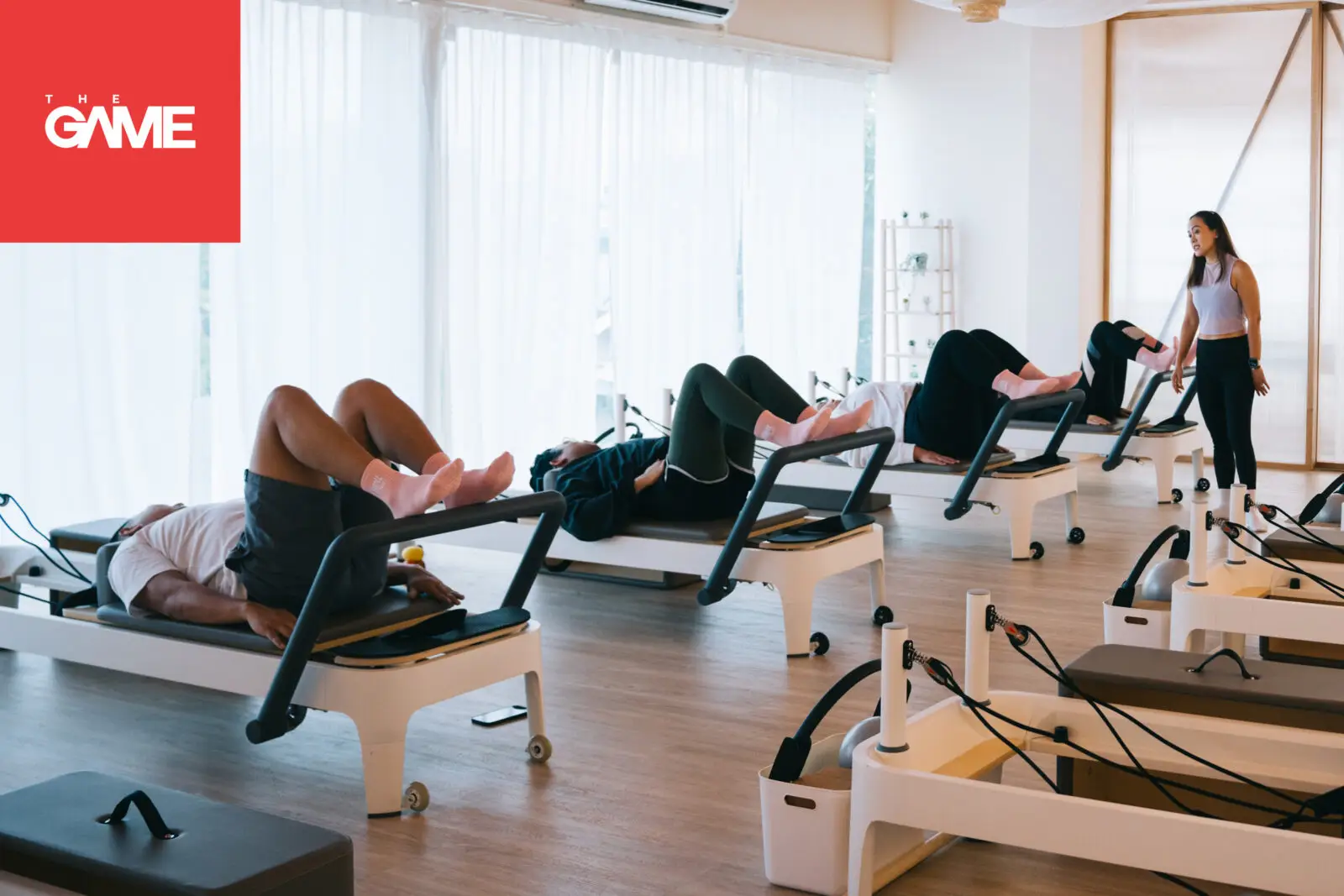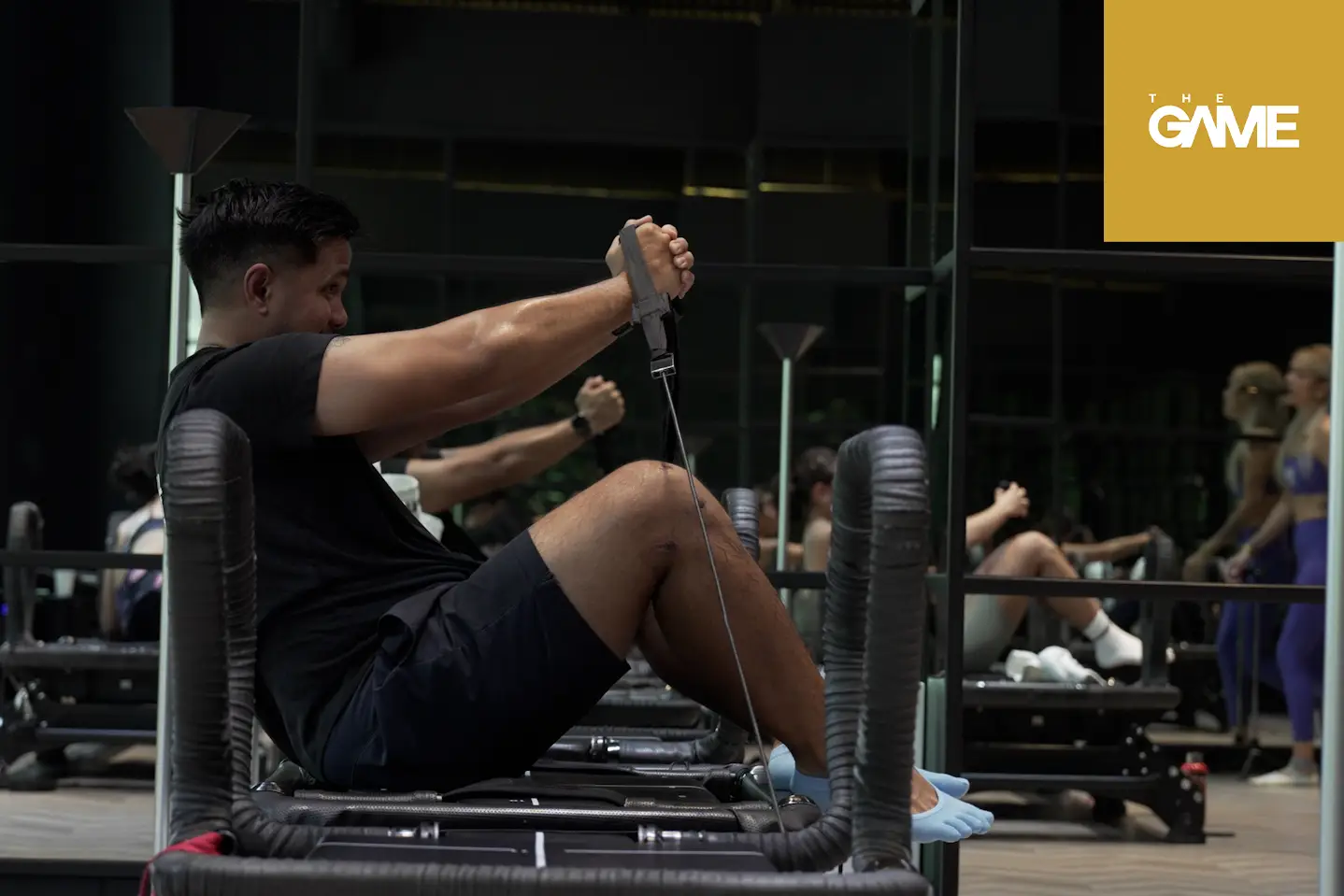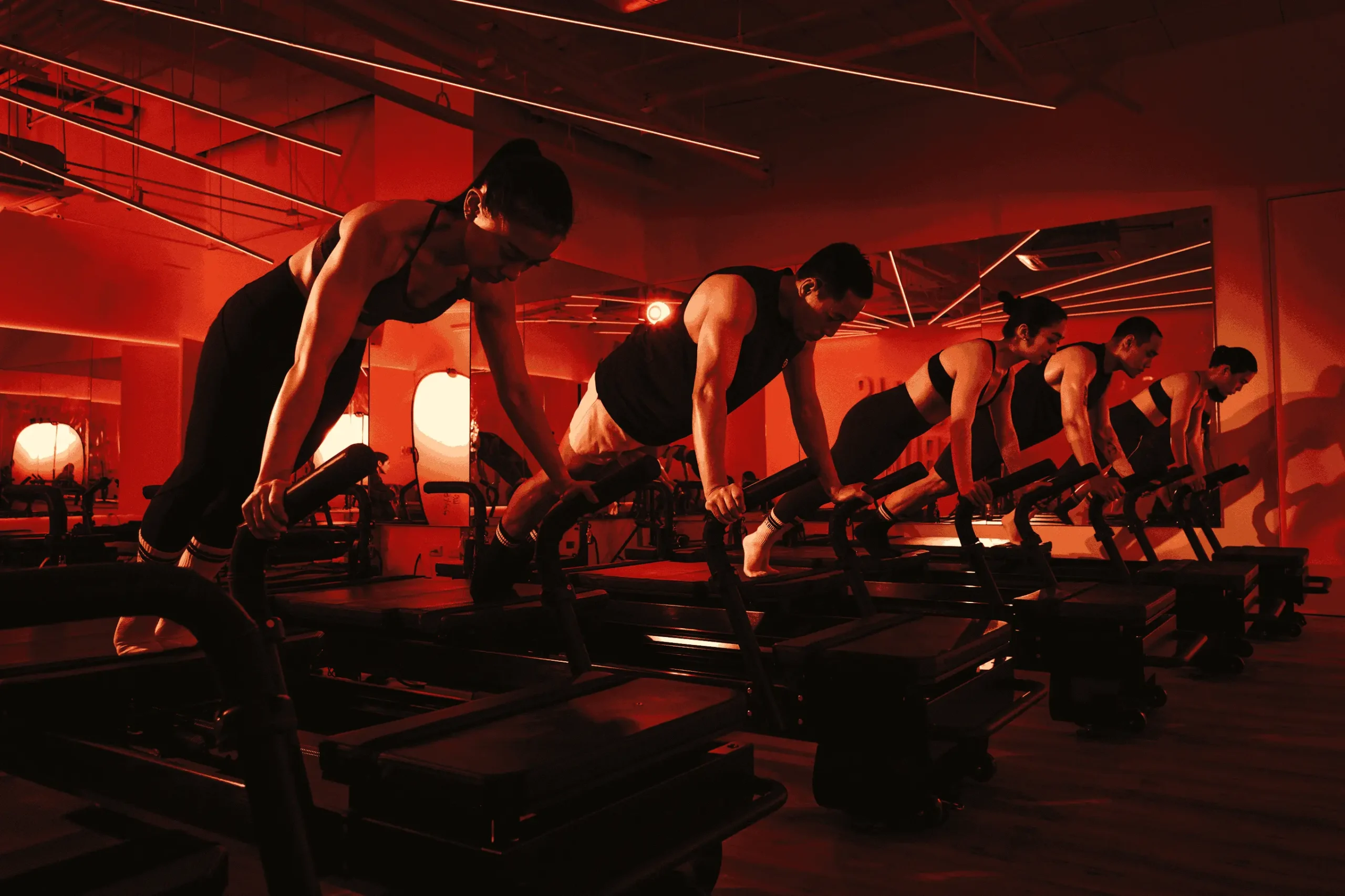We’ve tried a handful of different reformer classes. Here’s what we loved about each of them.
Reformer classes are having a major moment right now. If you keep up with the fitness zeitgeist, then you’ve probably already noticed the rising number of studios offering reformer classes around Metro Manila, and you may have even tried one or two for yourself.
In general, reformer classes offer low-impact, full-body workouts performed on a reformer: a bed-like machine equipped with resistance springs, straps, and pulleys. The many moving parts of the reformer allow for a wide variety of movements that target different muscle groups. Using slow, controlled motions, the workout focuses on building strength, toning the body, and improving mobility, balance, and control.
And if the rising trend of these kinds of workouts tells us anything, it’s that people are loving the slow burn.
Yet with so many classes across various studios in Metro Manila, it can be overwhelming to figure out where to start or what the differences are.
But The GAME’s got your back. We tried five different types of reformer classes in Metro Manila, and here are the benefits of each of them.
Private Pilates

Before we get into what we liked about our private Pilates class, let’s start with the basics: what exactly is Pilates?
Pilates is a low-impact workout method developed by Joseph Pilates in the early 20th century. It ranges from low to moderate intensity and focuses on improving strength, flexibility, and posture through slow, controlled movements.
We were able to get a taste of Pilates with a private class at Swan Dive Pilates. We joined as a pair, and one instructor guided us through a one-hour, full-body session using a traditional reformer machine. We moved through a series of slow, repetitive exercises that used the machine’s resistance springs — and yes, it burned. Our cores were sore for days.
One of the biggest takeaways from that first class was that in Pilates, as well as most reformer-based workouts, form is everything. To get the full benefits, you need to execute each movement with proper posture, alignment, and control. We clearly remember our instructor constantly reminding us to square our hips or keep our spines pressed to the carriage while lying down. Every little adjustment mattered. This level of control demands a lot from your core, making it a great ab workout.
But with just two of us in the room, the instructor could give us their full attention, correcting our form along the way and calling us out the moment we slipped into bad habits (a bit intimidating, but very helpful). Having that kind of guidance not only helps you get the most out of your workout, but it also minimizes the risk of injury from improper execution.
The benefits of a private class: If you’re new to Pilates or reformer workouts, we highly recommend starting with a private or semi-private session. It’s the best way to ensure you’re doing the movements safely and effectively, especially if you’re recovering from an injury. With the right guidance from the start, you’ll build a stronger foundation — and trust us, your body will thank you.
Group Pilates

After trying a private Pilates session, we had a good idea of what to expect when we joined a group class at MNL Pilates in Manila Athletic Club.
While the studio offers both private and group sessions, we opted for one of their group classes, where a single instructor led around eight to ten participants through a 45-minute full-body workout. Much like the private class, it emphasized slow, controlled movements and breathwork. Throughout the session, the instructor reminded us of the importance of posture and alignment, demonstrating proper form and assisting anyone who needed corrections.
That said, group classes require a bit more independence. Since the instructor’s attention is split, you’ll need to rely more on verbal cues and your own body awareness. For beginners who aren’t yet familiar with Pilates terms or the reformer machine, this can be a bit overwhelming. But the upside is that you can also watch the people around you, using their form and pace as visual guides to supplement the instructor’s cues.
The benefits of a group class: Like private sessions, group classes still give you a solid burn and an effective workout. But there’s an added boost of energy and motivation that comes from moving alongside others. We found that being surrounded by people pushing through the same tough movements helped keep us going. Group classes also tend to be more affordable, making them a great option if you’re mixing up your fitness routine.
Lagree

For beginners, Pilates and Lagree can seem almost interchangeable. Both are low-impact workouts performed on a bed-like machine, but here’s the key difference: Lagree, developed by Sebastien Lagree, is actually considered a high-intensity workout. While it’s still gentle on the joints, it ramps up the challenge by elevating your heart rate, which can also improve cardiovascular fitness (and burn more calories). It also uses a machine called the Megaformer, which resembles a Pilates reformer but is designed for more dynamic, full-body movements.
We tried a Lagree class at Ultra Lagree, a studio offering high-intensity, low-impact group workouts. What immediately stood out was the emphasis on time under tension. Compared to Pilates, Lagree has you hold each movement for an extended period. Take a lunge, for example: you lower for four slow counts, then rise back up for four. Sounds simple — until your muscles start shaking.
Those prolonged holds seriously upped the intensity. Our muscles were shaking during almost every move, which is a great sign that they were being challenged. We also noticed our heart rates climbing and sweat dripping onto the Megaformer, which is a clear sign of a workout that builds muscular endurance while giving you a good cardio burn.
The benefits of Lagree: If you’re looking for something more intense than traditional Pilates, something that pushes both your strength and stamina, Lagree is a great choice. It’s ideal for those who want to push harder, build endurance, and still keep it low-impact and joint-friendly.
(If you want to get a little peek into what an Ultra Lagree class is like, check out The GAME Tryouts’ first episode here!)
Rhythm-based

One of the most unique reformer classes we’ve ever taken was the Core Reformer class at Electric Studio. Like Lagree, it involves holding movements for long, intense periods, but what sets it apart is its rhythm-based format. Every move is timed to the beat of the music, turning the workout into something part strength training, part choreography.
Each 50-minute class is structured around music. Typically, you perform one movement or focus on one muscle group per song (for example, performing glute bridges on the reformer) and you rise and lower in sync with the beat. And just when the burn starts to kick in, the instructor might cue you to pulse to the rhythm, moving just an inch up and down until you feel the shakes.
In our session, we held one movement per track, with the tempo changing now and then to keep things dynamic. Holding a single position for the duration of an entire song? It burns, but in the best way. The goal is muscle failure, because that’s when the muscle-building magic happens.
The benefit of rhythm-based reformer classes: The burn is real and incredibly effective, but what makes these classes so fun is the music. Moving in sync with a beat gives the workout an energizing, almost dance-like vibe. It’s challenging, yes, but also empowering, rhythmic, and kind of addictive.
Pilates with Cardio

Another reformer experience that stands out in Metro Manila? STRONG Pilates, a studio that deems itself “more than just Pilates.” What makes STRONG so different is its hybrid reformer, which includes either a rowing machine or a stationary bike at the end of each one. Yes, this is Pilates with built-in cardio.
We tried their signature STRONG Body class, and it took high-intensity Pilates to a whole new level. We started with Pilates-inspired movements on the reformer, focusing on control and strength. But after a few minutes, the instructor cued us to switch to what they call the “erg side”, which is the rower or bike at the end of each reformer. The class takers would be prompted to row or bike for three to five minutes, and after that cardio burst, we returned to the reformer for another resistance block.
This format blends the best of both worlds: the slow, controlled strength training of Pilates with the heart-pumping challenge of cardio.
STRONG also offers a variety of classes depending on what you’re looking for. There’s “Loaded”, which adds dumbbells for extra resistance; “Sweat”, which amps up the cardio and intensity; and “Pilates Only”, for those who want to focus purely on strength.
The benefit of Pilates with cardio: Every session is a complete, well-rounded workout, blending resistance training and cardio all in one workout. So if you want to build strength, boost endurance, and work up a sweat, this type of class checks all the boxes.
Banner image taken by Excel Panlaque.
